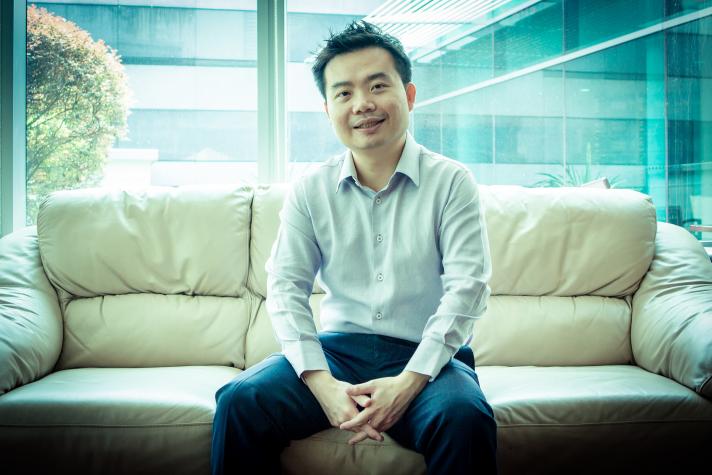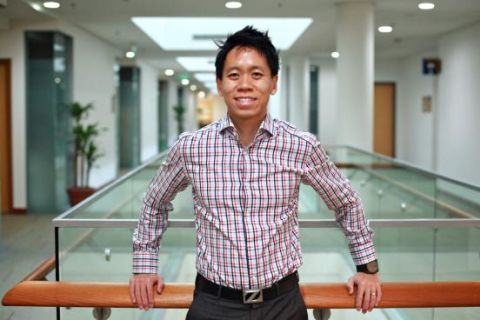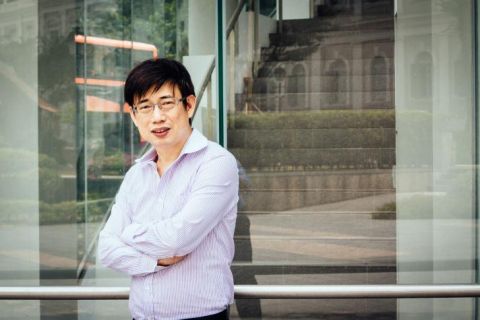
Associate Professor Seow Poh Sun of the SMU School of Accountancy works at the intersection of accounting, information technology and human behaviour.

Photo Credit: Darren Yau
By Prime Sarmiento
SMU Office of Research (25 Feb 2014) – These days, many companies rely on information technology (IT) to obtain financial data that will support decision making and performance assessment processes. But not even computerised decision aids are free from biases, as no human-designed software can factor in all the potential issues involved in the decision-making process.
“Organisations need to be aware of the implications of the design of their computerised decision aids,” says Seow Poh Sun, Associate Professor and Associate Dean (Teaching and Curriculum) at the Singapore Management University (SMU) School of Accountancy.
Shortly after obtaining his bachelor's degree in accountancy with a minor in IT, Professor Seow worked in the tax department at PricewaterhouseCoopers, and also lent support to the firm's information systems initiatives. After leaving the corporate world to enrol in graduate school in Australia, and in his capacity as a professor at SMU, he decided to focus his research on the intersection of accounting and IT.
Improving the design of decision aids
Given the extensive use of accounting information systems (AIS), no one can “escape” from using IT in any business operation, says Professor Seow. “We have to be careful of the decision making bias that the system may create. We can't do without the system but we must be aware of the bias, of the way we design the system.”
To study how the design of a decision aid can affect the decision making process, Professor Seow conducted an experiment where 94 students in an AIS class received a case narrative of a company's sales process. Their task was to identify all internal control activities present in the case narrative, and to suggest additional control activities that were missing from the narrative.
He randomly assigned each of the participants to one of three experimental groups: the first group was given a structurally-restrictive decision aid, the second a flexible decision aid, and the third group (the control group) did not use a decision aid. Structurally-restrictive aids force users to employ them in a prescribed manner, while flexible aids allow interaction in any manner that the user desires.
His experiment revealed that the degree of structural restrictiveness is an important aspect in the design of decision aids. A more restrictive design imposes more limits on users by forcing users to adapt their decision making process to match the decision aid, he says.
“Results indicated that a more restrictive decision aid affected the users’ decision-making process by increasing their decision making bias. This was achieved by reducing their ability to identify items not specifically prompted by the aid,” he explains, adding that their findings will enable organisations to make more informed decisions about the design of their decision aids.
Learning accounting with the help of technology
Professor Seow also studies human interactions with IT, with a special focus on the accountancy sector. As an educator, he is especially keen to study how accountancy students interact with technology. He has pioneered research on the use of mobile applications, interactive online platforms and digital movies as an effective teaching pedagogy for engaged student learning.
"The current generation of students is highly acquainted with technology and many of them constantly explore new technological tools to keep themselves up-to-date with technical knowledge. Increasingly, universities have leveraged on technology through the incorporation of computer-based learning in their teaching pedagogy. My research examined the impact of the adoption of technology on a student's learning. The aim is to identify the key to maximise the student's learning," Professor Seow says.
In 2011, Professor Seow and his colleague Gary Pan, also an Associate Professor at the SMU School of Accountancy, used their SMU pedagogy project grant to develop an e-learning resource to teach Resource-Event-Agent (REA) data modelling in an AIS course.
“Initial analysis of the survey data indicated that a student’s knowledge on REA data modelling increased after using the e-learning resource. This further supports the effectiveness of incorporating technology in accounting education,” he says.
A year later, he used another SMU pedagogy project grant to develop a mobile-gaming application called the SMU Accounting Challenge (ACE). The application, which he developed with colleague Ms Wong Suay Peng, aims to enhance learning of accounting outside the classroom by engaging students to learn accounting on the go through game play.
“Students enhance their accounting knowledge in a fun way through fast-paced questions and answers. ACE hopes to generate interest and motivation for digital-savvy students beyond a theoretical study of accounting,” says Professor Seow.
By the end of 2013, ACE had been downloaded 5,777 times in nearly fifty countries. ACE also won the 2013 CEEMAN Champion Award for Innovative Pedagogy. Students who downloaded ACE rated the application favourably and found it an engaging and fun way to learn.
Indeed, Professor Seow's latest research paper, published in 2013, proved the effectiveness of digital storytelling in teaching accountancy students in SMU. The paper, which he co-authored with SMU Associate Professor Gary Pan and Associate Professor Themin Suwardy (also from SMU School of Accountancy), was based from the results of an independent survey conducted among students who were exposed to digital storytelling. The survey revealed that they learned how to contextualise accounting after watching a series of digital movies that feature young entrepreneurs who use financial information to manage their business.
Professor Seow is currently teaming up with Professors Pan and Suwardy on a new research project: to mine accounting data for fraud detection purposes. Fraud analytics is a relatively new research area, as most researchers have had difficulty accessing big data sets in accounting journal entries.
“There is an increased emphasis by auditing standards to data mine journal entries as part of fraud detection. Our work in this new research area will contribute to both the literature and industry practice about the application of statistical data mining technology to detect fraud in journal entries,” he says.
See More News
Want to see more of SMU Research?
Sign up for Research@SMU e-newslettter to know more about our research and research-related events!
If you would like to remove yourself from all our mailing list, please visit https://eservices.smu.edu.sg/internet/DNC/Default.aspx

